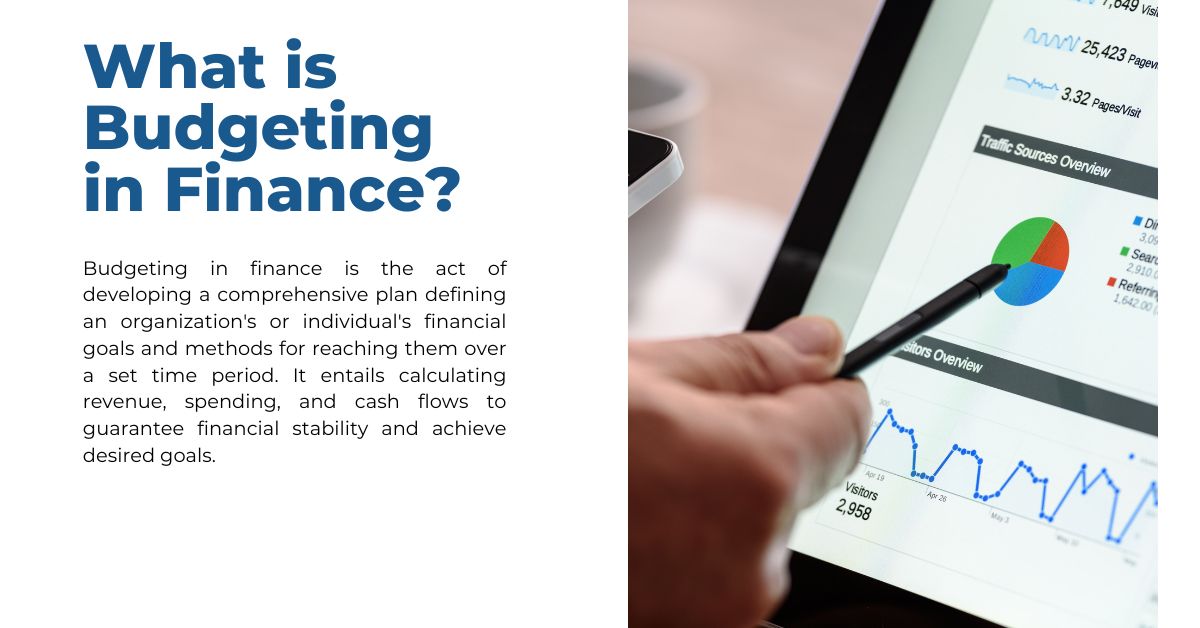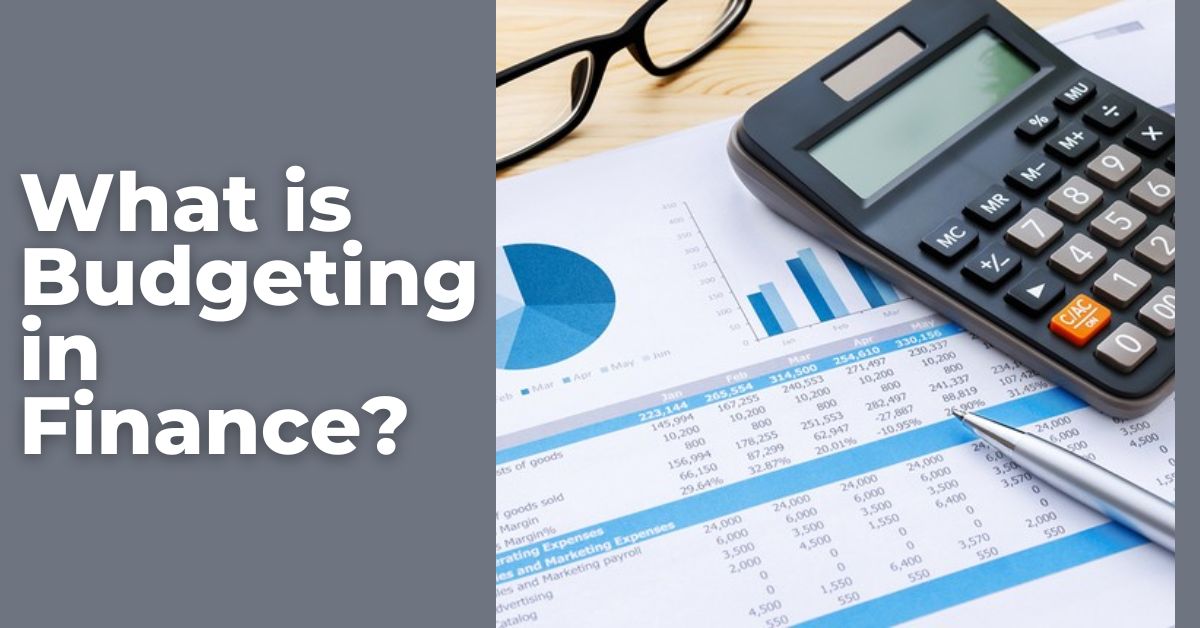Do you feel lost in a sea of numbers? Is the mere word “budget” sending shivers down your spine? This blog is your compass, helping you through the broad and sometimes misunderstood world of financial budgeting.
Ignore outdated prejudices. A financial budget is not a constraint but rather a strong instrument for empowering your financial decisions and mapping your path to financial success.
Whether you’re an experienced money manager or just starting out, knowing the fundamental concepts, many forms, and real-world examples of budgets is critical to realizing their full potential.
Read this article to learn how a financial budget may change your relationship with money, from reducing financial stress to meeting business goals and, eventually, safeguarding your financial future.
What is Budgeting in Finance?

Budgeting in finance is the act of developing a comprehensive plan defining an organization’s or individual’s financial goals and methods for reaching them over a set time period. It entails calculating revenue, spending, and cash flows to guarantee financial stability and achieve desired goals.
Budgets serve as a guide for decision-making and resource allocation. They assist in evaluating financial performance, recognizing potential hazards, and making required changes to stay on course. Effective budgeting is critical for organizations to manage resources efficiently, make sound investment decisions, and ultimately achieve long-term financial success.
Types of Budgets
Here are some of the common types of budgets in finance:
- Operating Budget: This budget outlines the day-to-day expenses and revenue of an organization, covering items like salaries, utilities, marketing costs, and sales projections.
- Capital Budget: This budget focuses on long-term investments in assets like machinery, equipment, and property. It helps assess the financial feasibility of capital projects.
- Cash Budget: This budget tracks the inflow and outflow of cash, helping to predict cash surpluses or deficits and ensure the organization can meet its financial obligations.
- Master Budget: This is the overarching financial plan that encompasses all the individual budgets of different departments or divisions within an organization.
- Flexible Budget: This budget adjusts to changes in activity levels, such as variations in sales or production volumes. It provides a more accurate picture of performance under different conditions.
- Zero-Based Budget: In this approach, every expense is justified from scratch, starting from a “zero base.” This helps identify and eliminate unnecessary costs.
- Sales Budget: This budget forecasts expected sales volumes and revenue, serving as the foundation for planning production and setting sales targets.
These are just a few examples, and the specific types of budgets used by an organization may vary depending on its size, industry, and strategic goals.
Why is Budgeting Important for Financial Planning?
Budgeting in finance is the act of developing a comprehensive plan defining an organization’s or individual’s financial goals and methods for reaching them over a set time period. It involves analyzing revenue, spending, and cash flows to guarantee financial stability and achieve desired goals.
Budgets serve as a guide for decision-making and resource allocation. They assist in evaluating financial performance, recognizing potential hazards, and making required changes to stay on course. Effective budgeting is critical for organizations to manage resources efficiently, make sound investment decisions, and ultimately achieve long-term financial success.
What is Capital Budgeting in Finance?
Firms use capital budgeting, a financial procedure, to evaluate and rank long-term investment initiatives. It entails assessing the prospective profitability of initiatives to determine which are worth pursuing and allocating financial resources appropriately. These initiatives often need major financial investments, such as acquiring new equipment, constructing new facilities, or introducing new goods.
Capital budgeting tools such as Net Present Value (NPV), Internal Rate of Return (IRR), and Payback Period assist in determining the financial sustainability of these projects by taking into account cash flows, the time value of money, and risk. Using these tools, organizations may make educated decisions about where to invest their limited resources in order to maximise long-term value and fulfill their strategic objectives.
What is the Purpose of a Budget?
A budget’s principal function is to offer a financial roadmap for individuals and organizations to help them achieve their financial goals. It is a tool for planning, tracking, and managing income and spending. Budgets assist people and organizations in identifying possible financial risks, prioritizing expenditure, and making educated resource allocation decisions.
They also help people manage their finances more effectively by allowing them to track their success, alter their spending patterns, and save for the future. Finally, a well-crafted budget helps people and businesses attain financial stability, security, and success.
If you want to read more about financial blogs, you can read these articles:
- Cash Conversion Cycle: The Lifeline of Business Operations
- Cash Flow Statements: The Blueprint to a Company’s Financial Health
What’s the 50/30/20 Rule in Finance?
The 50/30/20 rule is a straightforward yet efficient budgeting strategy that splits your after-tax income into three categories: 50% for basic needs, 30% for wants, and 20% for savings. The “needs” category includes necessities such as rent, utilities, food, and transportation.
Discretionary expenditure on entertainment, dining out, and hobbies falls under the “wants” category. The “savings” category includes creating an emergency fund, paying off debt, and saving for future goals such as retirement or a down payment on a home. By adhering to this guideline, you may strike a balance between meeting your financial duties, enjoying life, and safeguarding your financial future.
How to Prepare a Budget?
To create a budget, begin by documenting your income and expenses for a few months to better understand your spending patterns. Then, divide your costs into requirements (housing, utilities, consumables) and desires (dinner out, entertainment). Set achievable financial objectives, such as saving for a trip or retirement. Choose a budgeting technique that works for you, such as the 50/30/20 rule or zero-based budgeting.
Allocate monies to each area, making sure you have enough for necessities, wants, and savings. To keep on track, check your budget on a regular basis and make any necessary adjustments. Budgeting software and spreadsheets may help you arrange your finances and track your progress. Remember that flexibility is essential, so don’t be hesitant to adapt when your circumstances change.

